International sonic arts luminaries perform at Aotearoa Audio Arts Festival, Wellington, New Zealand
- Dec 31, 2015
- 7 min read
Updated: Nov 29, 2024
Luminaries from local and international sonic arts scene performed at Aotearoa Audio Arts Festival, Wellington, New Zealand, a program by Streaming Museum partner, Mo H. Zareei. Aotearoa Audio Arts Festival by Robert Hattaway
Aotearoa Audio Arts fits into a long tradition of sonic experimentation in New Zealand, as pointed out by festival co-director Dugal McKinnon during the opening at Potocki Paterson Gallery. There have been many events and spaces working in this vein, albeit scattered geographically and operating at different times. However, this Wellington-based event stood out, bringing together leading local practitioners as well as luminaries from the international sonic arts scene. Across two days (28-29 September 2018), City Gallery Wellington saw six major performances by artists including Myriam Bleau, Nicolas Bernier, and Richard Chartier. A panel discussion on Saturday gave insight into some of the artists’ practices, while a series of installations at Potocki Paterson Gallery focused on perceptually heightened interactions with sound. Here, Blake Johnston, Bridget Johnson, Ted Apel, Matt Lambourn, and Flo Wilson all exhibited works that facilitated unique aural experiences. Across both the performances at City Gallery and the installations at Potocki Paterson, innovation was high on the agenda. Hopefully, the inaugural Aotearoa Arts festival is the first iteration of an annual festival.
ZAREEI/MURPHY
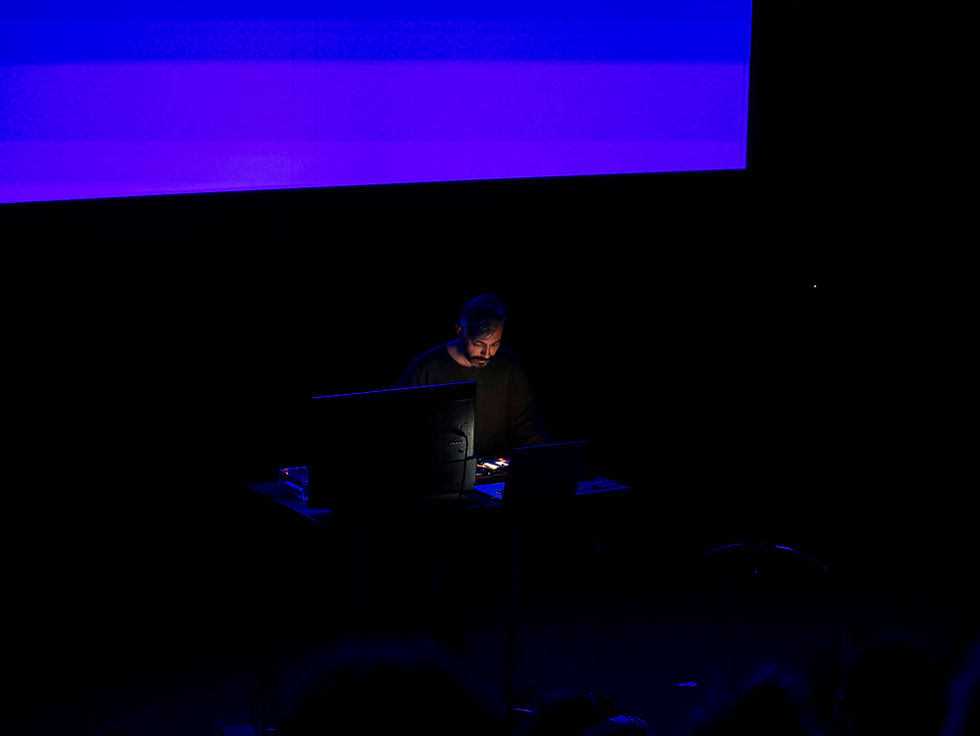
aoteroa audio arts festival concert series 28-29 September 2018. Mo H. Zareei, photo by Richard Robertshawe
The first of the performances on the Friday evening came from Mo H. Zareei and Jim Murphy (also co-directors of the festival), collaborating as Technical Earth. Zareei’s Function provided an intense audio-visual experience that explored the possibilities of generative technologies. Each phase of the work was based on a mathematical function (e.g. y = x). Between each section of the performance, these equations were displayed, giving the audience some hint as to the complexity of the processes employed, perhaps reflecting Zareei’s background in physics. Interacting with custom-made software and hardware, these criteria provided a basis for, as Zareei puts it, “an aesthetic exploration of digital audio in its purest form.” Such purity was brought to mind throughout the performance. The synchronous audio and visual palettes were restricted, however they served as a basis for countless variations and developments. The visual component at times appeared like a permutational De Stijl painting.
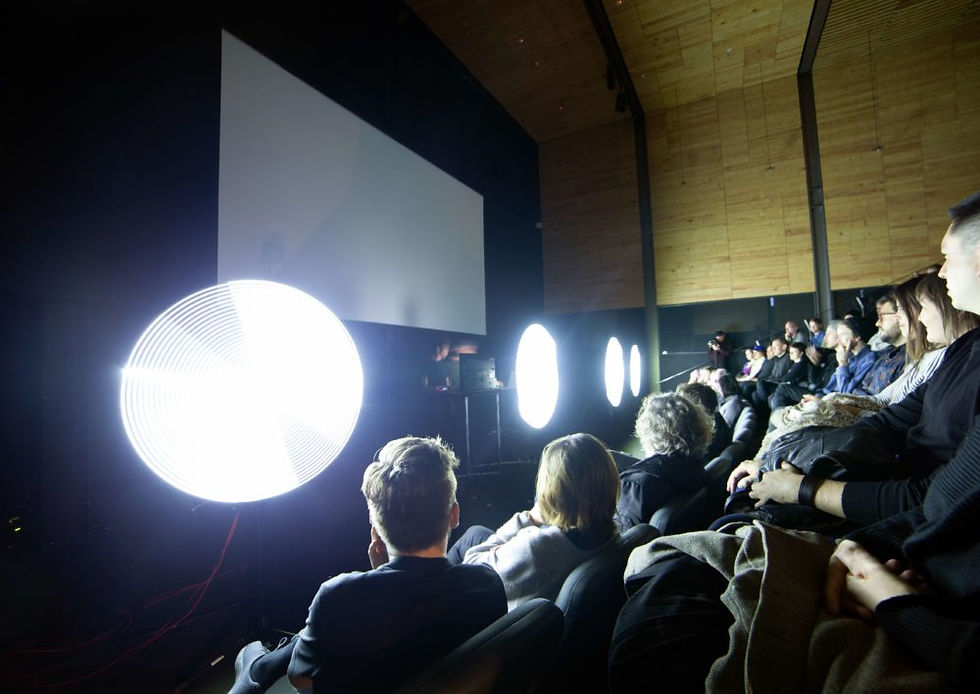
aoteroa audio arts festival concert series 28-29 September 2018. Mo H. Zareei and Jim Murphy, photo by Richard Robertshawe
Sonically, the audience were presented with what could have been interpreted as an apocalyptic reassembly of techno. The excellent sound system, supplied by Oceania Audio, helped to facilitate a truly immersive experience, with the audience feeling the sound as much as hearing it. Zareei and Murphy also showed their mechatronic work Omega. Here, four rotating light objects with synchronous audio effects (fittingly sampled from fans) were positioned across the stage. These large fan-like objects rotated at various speeds to produce a myriad of mesmerizing audio and visual effects. Like the previous work, Omega provided an exciting investigation into audiovisual kineticism.
BLEAU
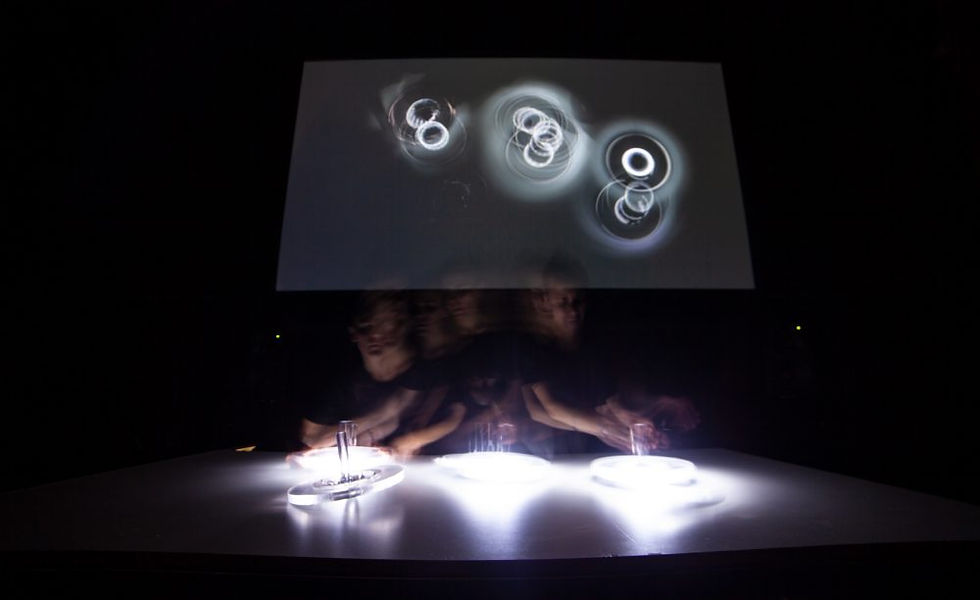
aoteroa audio arts festival concert series 28-29 September 2018. Myriam Bleau, photo by Leon Gurevitch
A recurring theme, particularly on the first night, was the intersection of sound, visuals, and physical processes. Combining the concept of gesamtkunstwerk with her background in performance, Myriam Bleau’s Soft Revolvers was one of the most striking examples of this interdisciplinarity. In the piece, four large acrylic spinning tops were fitted with sensors, which detected speed and rotational direction. The sensors on each disk were wirelessly mapped to different audio channels on a laptop.
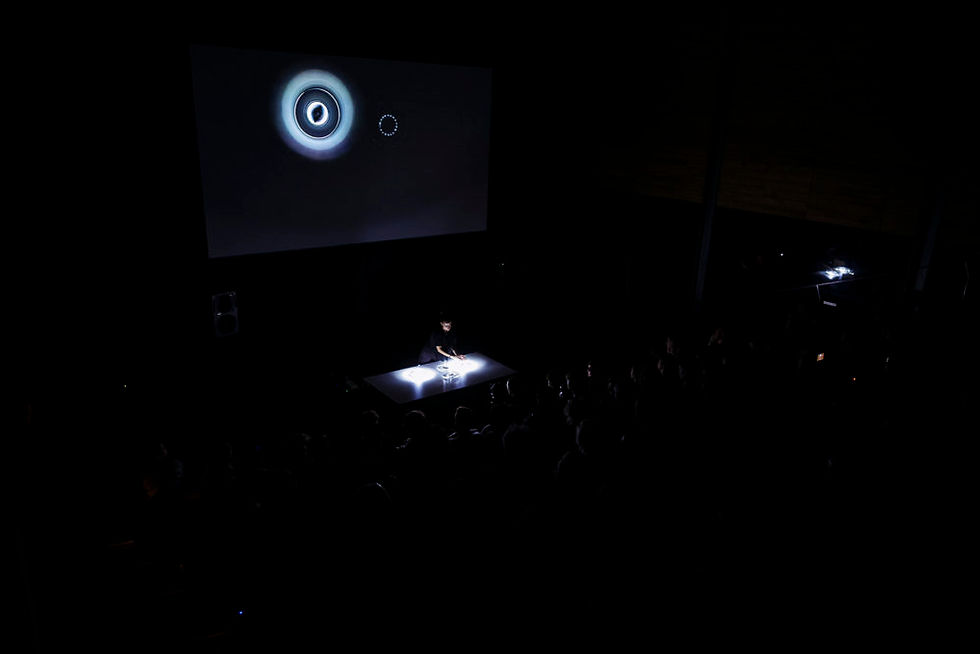
aoteroa audio arts festival concert series 28-29 September 2018. Myriam Bleau, photo by Richard Robertshawe
Performing in complete darkness, the way that the artist spun these illuminated devices triggered unusual but entrancing combinations of light and sound, leaving the audience spellbound. On the Monday after the festival, at Toi Pōneke Gallery, Bleau expounded her belief that new instruments allow artists to set new parameters and integrate these fully into the resulting musical work. Both of these objectives were masterfully realized in Soft Revolvers .
BERNIER
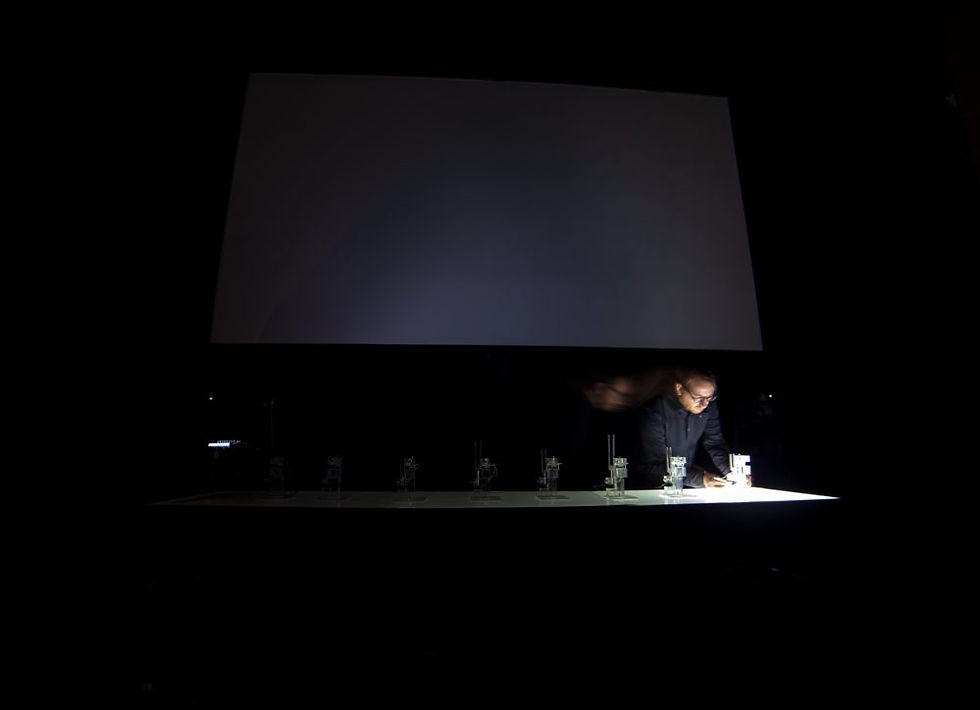
aoteroa audio arts festival concert series 28-29 September 2018. Nicolas Bernier, photo by Leon Gurevitch
Having previously worked in film, graphic design, and video theatre, lauded Canadian artist, Nicolas Bernier also explored the interplay between audiovisuality and performance practice. Frequencies (a), winner of the Golden Nica at Prix Ars Electronica (2013), saw its final ever performance as part of Aotearoa Audio Arts. In introducing the piece, Bernier jokingly suggesting that the piece would be up for sale afterwards. In this work he sought to create “electronic” sounds through acoustic means. Though he fell short of totally realizing this objective, as the piece also relies on loudspeakers, Bernier stated at Saturday’s panel discussion that he was entirely comfortable with such contradictions, functionality and impact being his desired outcomes.
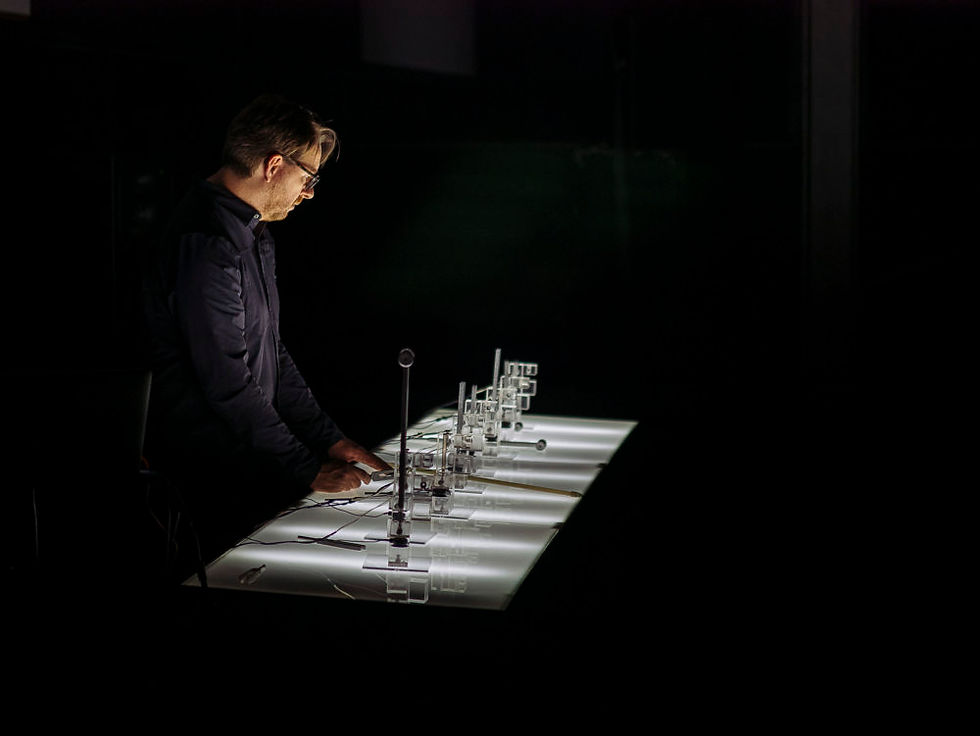
aoteroa audio arts festival concert series 28-29 September 2018. Nicolas Bernier, photo by Richard Robertshawe
Illuminated tuning fork modules provided the main sonic devices in Frequencies (a). Sounding similar to a metallophone in timbre, eight tuning forks of different pitches sat upon a large illuminated box, controlled either by computer initiated sequences or physical intervention. Throughout the performance, Bernier explored the sonic possibilities of this instrument, also employing hand-held tuning forks in addition to a bow, which elicited piercing tones when combined with the instrument. Frequencies (a) provided a spectacular close to the first night of performances.
MCKINNON/VOYCE/ COOKE/THORNE
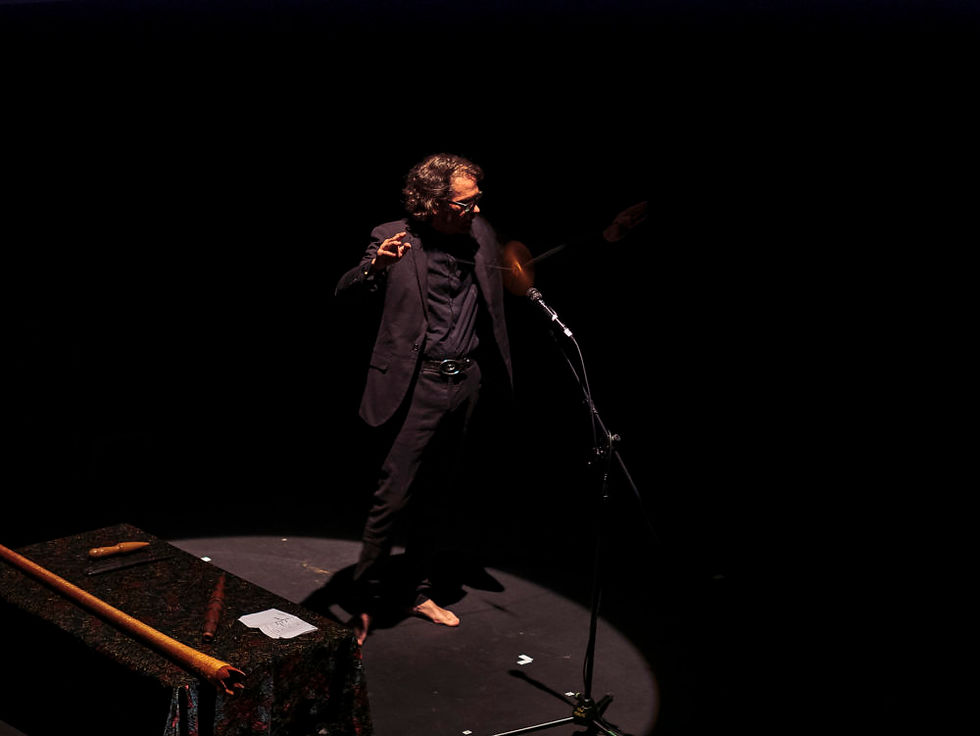
aoteroa audio arts festival concert series 28-29 September 2018. Rob Thorne, photo by Richard Robertshawe
Day two of Aotearoa Audio Arts saw a turn away from unconventional instruments, though to work that was no less experimental. Aataata-Rongo Aotearoa, a collaborative work by Dugal McKinnon, Thomas Voyce, Grayson Cooke, and Rob Thorne, married performance practice, cinematography, and pre-recorded audio. Thorne, a renowned taonga puoro practitioner, opened the performance, the low tones of his pukaea (a long open ended trumpet) filling the City Gallery Wellington auditorium. Entering from the rear of the space, he made his way behind the mixing desk and down the stairs on one side of the room. Directing his pukaea towards the microphone, the instrument’s sullen tones became soaked in reverb. Next, the audience encountered the work of Thomas Voyce.
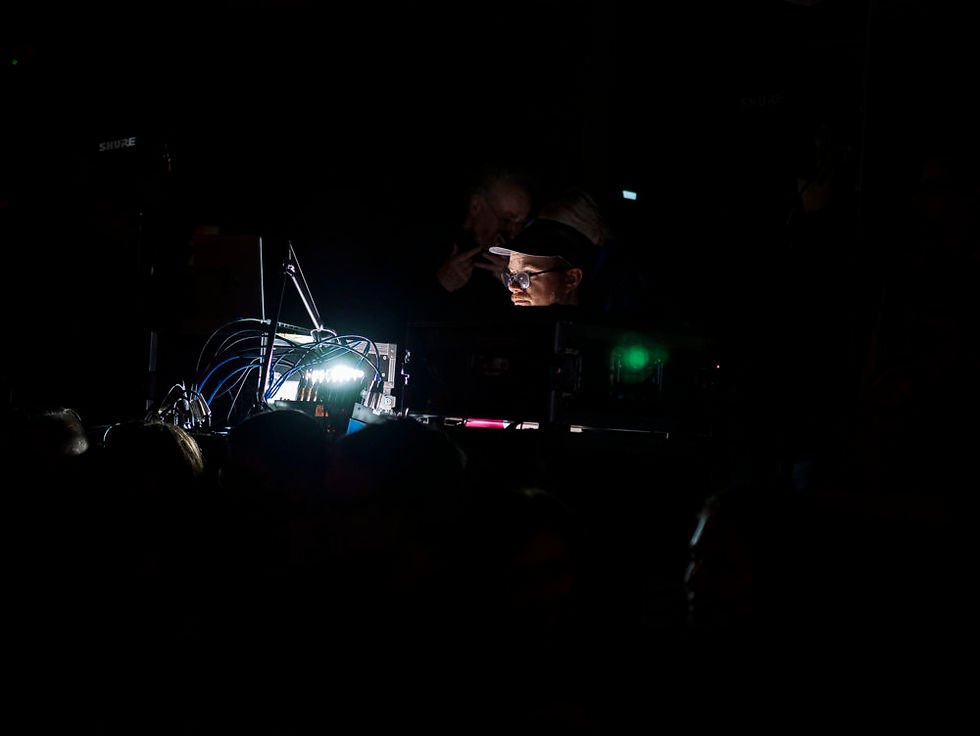
aoteroa audio arts festival concert series 28-29 September 2018. Thomas Voyce, photo by Richard Robertshawe
His contribution to Aataata-Rongo Aotearoa was an investigation of environmental sounds, contrasting with the synthetic material that dominated much of the festival. Digital manipulations intensified chosen aspects of these recordings, which included the sounds of bees and natural ambiences. Within the same work, these sounds were juxtaposed with Dugal McKinnon’s polymorphous digital soundscapes, which provided a fitting accompaniment to Grayson Cooke’s striking filmic juxtapositions of slow-paced footage of limestone caves and time-lapse LandSat imagery of Antarctica. The various sections of the performance were interspersed with Thorne’s taonga puoro, enveloping the space in a brooding atmosphere.
DRAMM/LABERGE
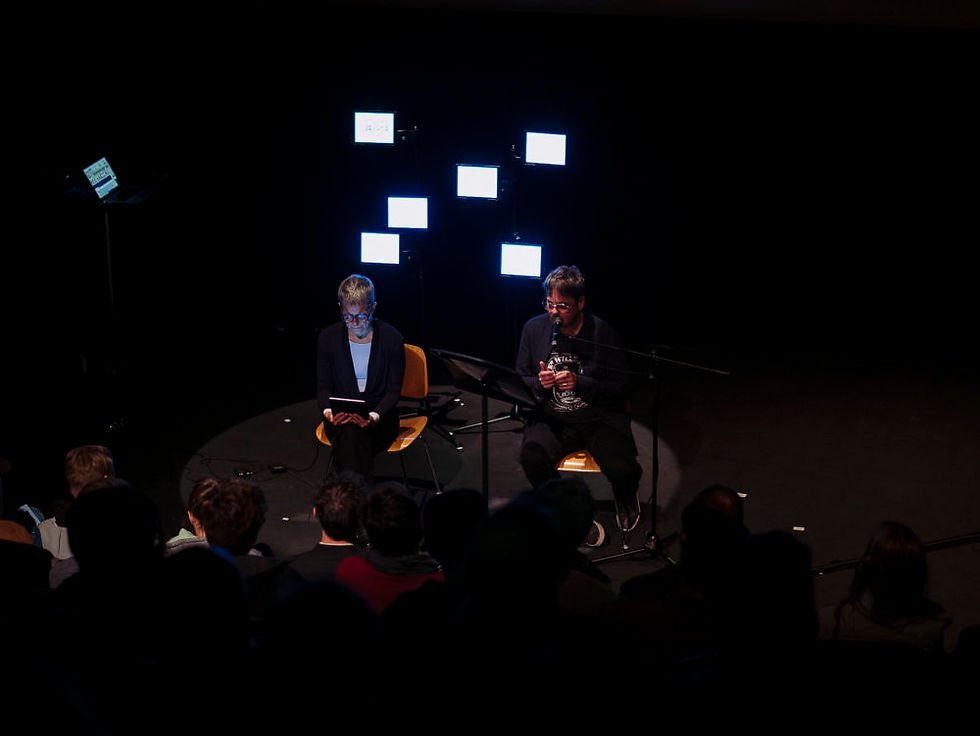
aoteroa audio arts festival concert series 28-29 September 2018. Anne La Berge and David Dramm, photo by Richard Robertshawe
Opening her collaborative performance with David Dramm, experimental flutist and composer, Anne La Berge performed a work entitled Delay/Line by Sam Pluta. This piece used looping techniques to create complex harmonic effects, a simple concept, but one requiring immense skill to execute, as La Berge excellently demonstrated. Following this, the audience encountered Dramm’s sullen Telemachus, a spoken word piece based loosely on Homer’s Odyssey. With La Berge providing an instrumental backdrop, the piece was punctuated with ship’s radio signals and the sound of morse code, an altogether disquieting experience. Utter provided one of the more unsettling works in the festival. Improvisatory flute playing and spoken word (which were at times conflated) provided the sonic basis for this work, in which La Berge maps out the complexities of mother/child communication, a tale ending in matricide. Arranged on stands behind the audience, six iPads offered glimpses of words from the narrative, along with images of babies, mouths, and shots of the performer herself staring stoically in different directions. The unpredictable and intense nature of this performance left everyone at least a little on edge. Oneiricon by Yannis Kyriakides seemed positively serene next to the intensity of Utter. To complete this set of experimental works Dramm returned to the stage, and the two performers delivered a curious narrative involving their daughter, travels in Cold War Europe, and Britney Spears. Speaking simultaneously, their voices formed a heterophony in which the slight discrepancies between their speech created an intriguing and unpredictable vocal effect.
CHARTIER
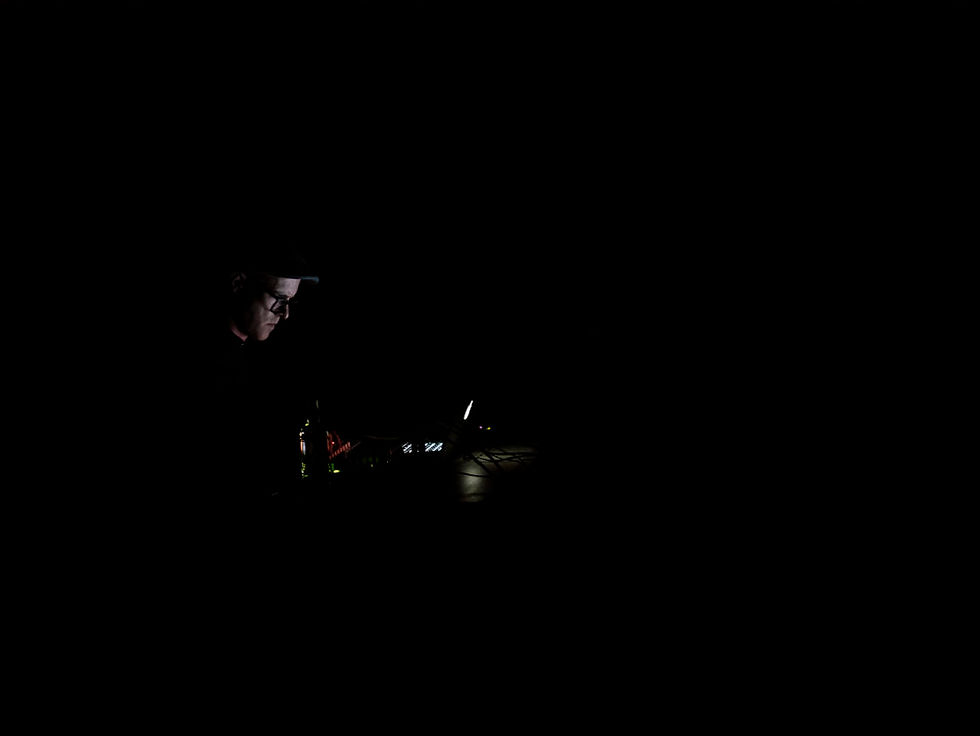
aoteroa audio arts festival concert series 28-29 September 2018. Richard Chartier, photo by Richard Robertshawe
An eminent figure in minimalist sound art, Richard Chartier’s live-set provided the conclusion to Aotearoa Audio Arts. His work offered a stark contrast to the work which preceded it. Sitting at a laptop at the front of the auditorium, Chartier’s work explored minute sonic developments over its duration and rejected any sort of visual element. Though initially trained as a visual artist, Chartier now works solely with sound. This offered a departure from the largely interdisciplinary approach that characterized the rest of the festival’s performances. Chartier’s work had more in common with some of the installations at Potocki Paterson gallery, particularly Blake Johnson’s “metaperceptual” pieces. Through the performance, the audience develops a heightened sense of awareness, sometimes straining to detect changes in his delicate soundscapes. Many of these seemed to have a kind of natural quality to them despite the fact the he was working primarily with synthetic sound. The opening of the work brought to mind water dripping in a cave for instance. At times, complete silence was used by Chartier, helping to facilitate an exploration of, as Chartier puts it, “the spatial nature of sound, silence, focus, perception and the act of listening itself.”
EXHIBITION
Aotearoa Audio Arts Festival | Exhibition at Potocki Paterson Gallery . The works showcased at Aotearoa Audio Arts demonstrated the diverse range of expression in the world of contemporary sound-based art. Wellington City Gallery, with its focus on promoting the contemporary avant-garde, was an appropriate venue in which to experience these works. From Richard Chartier’s subtle ambiences, to the intense audiovisual stimulation of Soft Revolvers, the plurality of forms in the festival gave its audience a comprehensive picture of sonic and audiovisual experimentation in 2018.